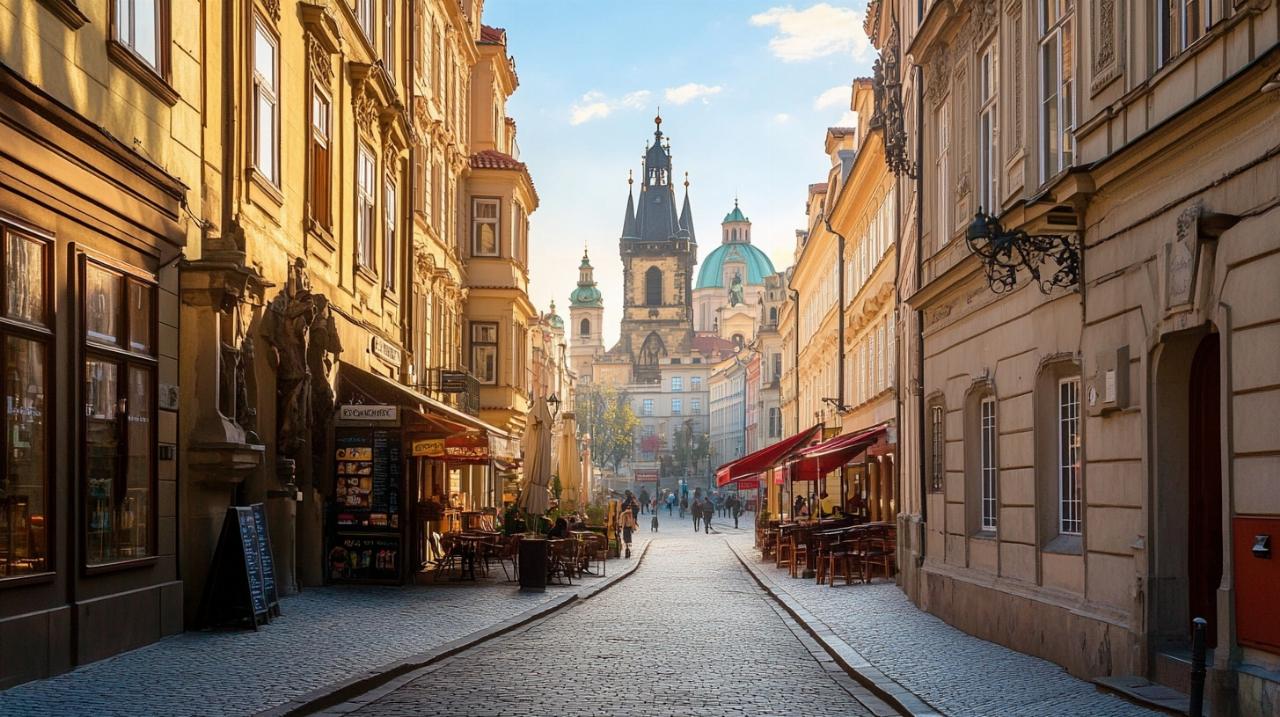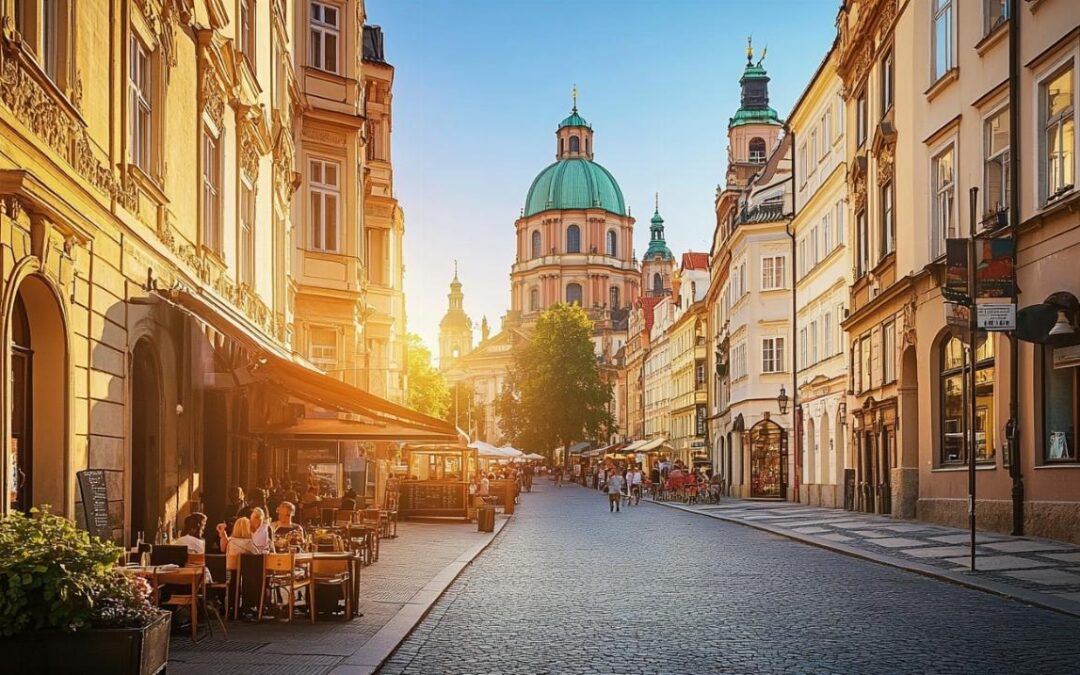Planning a European getaway doesn’t have to break the bank. With careful planning and insider knowledge, you can find comfortable and affordable accommodation options that leave room in your budget for experiences, dining, and souvenirs. Whether you’re dreaming of wandering through historic UNESCO sites in Krakow or soaking in Budapest’s thermal baths, this guide will help you stretch your travel funds further with smart lodging choices.
Hostels and shared accommodations
Hostels have evolved dramatically over the past decade, offering far more than just a cheap place to sleep. They’ve become social hubs where travellers can connect while saving significant money compared to traditional hotels. Many budget travellers have discovered excellent options like Budapest’s The Hive Party Hostel, where you can stay for as little as €50 for three nights. For those visiting Poland, accommodations like “ThelittleHavanapartyhotel” in Krakow offer beds from just €15 per night, leaving more funds to explore attractions such as Wieliczka Salt Mines or Schindler’s Factory. For more recommendations and booking options, you might want to check out reviews on www.hotelcondado.es, which offers insights into various accommodation types across Europe.
Navigating dorm options and social benefits
When booking hostels, consider what type of experience you’re after. Larger dorms (8-12 beds) typically offer the lowest rates, while smaller dorms (4-6 beds) strike a balance between affordability and privacy. Many hostels also offer private rooms that remain significantly cheaper than equivalent hotel rooms while still providing access to social spaces like communal kitchens and lounges. The social aspect is perhaps the greatest hidden value—fellow travellers often share tips about local spots, upcoming events, or even form impromptu groups to split costs on activities and transportation.
Boutique hostels: affordable luxury for budget travellers
A growing trend across Europe is the boutique hostel, which combines affordability with stylish design and enhanced amenities. These establishments often feature themed décor, quality bedding, and thoughtful touches like reading lights, privacy curtains, and secure storage. Many boutique hostels in cities like Barcelona, Lisbon, and Berlin offer pod-style beds that provide more privacy than traditional dorms. Some even include unexpected luxuries like rooftop terraces, cinema rooms, or bar areas with reasonably priced drinks—making them particularly popular for city breaks in cultural hubs.
Budget hotel chains and discount strategies
Reliable budget hotel chains have expanded throughout Europe, offering standardized comfort at predictable prices. While lacking the social atmosphere of hostels, they compensate with privacy and convenience, especially for couples or those who prefer their own space. These chains often cluster around transport hubs and business districts, making them practical bases for exploring city attractions like the magnificent St. Stephen’s Basilica in Budapest, which offers free entry with a small fee for visiting the dome.
Early booking advantages and loyalty programmes
Many budget hotel chains operate tiered pricing models that reward early bookings with substantial discounts. Reserving rooms three to six months in advance can often save 30-40% compared to last-minute rates, particularly in destinations like Andalusia during peak season. Loyalty programmes also offer significant value even for occasional travellers—points accumulate across multiple brands within the same hotel group and can lead to free nights or room upgrades. Some chains even partner with airlines or credit cards, creating opportunities to double-dip on rewards points.
Last-minute deals and price comparison tactics
For the flexible traveller, last-minute bookings can yield surprising bargains, especially during shoulder seasons like November in Madeira when hotels are eager to fill empty rooms. Specialist apps and websites track price drops and flash sales, sometimes offering premium rooms at budget prices. A savvy approach involves making refundable reservations early, then monitoring prices as your travel date approaches. If better deals emerge, you can switch without penalty. Using search engines in ‘incognito’ mode also prevents price inflation based on your browsing history, potentially saving pounds on longer stays.
Making the Most of Airbnb
The home-sharing revolution has transformed budget travel, especially for those seeking authentic local experiences. However, finding true bargains requires looking beyond obvious listings in tourist hotspots. Genuine deals often appear in residential neighbourhoods just outside city centres, particularly in well-connected cities like Clermont-Ferrand in France’s Auvergne region, where you can easily reach attractions like the volcanic stone cathedral while staying in more affordable surrounding areas.
Finding hidden bargains away from city centres
Properties just a few underground stops or a short bus ride from major attractions often cost significantly less than their central counterparts. In cities like Cluj Napoca in Transylvania, staying slightly further out can reduce accommodation costs by 30-40% while providing a more authentic glimpse of local life. Many suburban areas have excellent transport connections and their own charming amenities, from neighbourhood cafés to local markets. Some travellers specifically seek out stays near university districts, which typically offer good transport links, affordable dining options, and vibrant atmosphere at reasonable prices.
Shared properties: balancing privacy and cost
Renting a private room rather than an entire property dramatically reduces costs while still providing more privacy than a hostel. This approach works particularly well for solo travellers or couples who plan to spend most of their time exploring. Many hosts offer valuable local knowledge about hidden gems like the best spots to try traditional dishes such as goulash in Budapest for around €10, or where to find the most authentic truffade in Auvergne. For longer stays, some hosts offer significant weekly or monthly discounts that can reduce nightly rates by 20-50%, making this option extremely economical for slow travel.
Family-run establishments offer a charming middle ground between hotels and home stays, often with rates that pleasantly surprise budget-conscious travellers. These accommodations particularly shine in rural areas like Transylvania, where they provide cultural immersion alongside comfort. Visitors to Sighișoara or Sibiu can experience traditional Romanian hospitality while paying just €30-40 per night, including hearty breakfasts that showcase local specialities.
Family-run establishments and local experiences
The personal touch distinguishes guesthouses from chain accommodations. Owners often share insider recommendations about local attractions, seasonal events, and authentic dining spots where you might pay just €5-10 for substantial meals in places like Romania. Many guesthouses in regions such as Auvergne occupy historic buildings with character features that chain hotels simply cannot match. These establishments frequently become highlights of the travel experience themselves, offering glimpses into local lifestyles that complement visits to formal attractions like Cordoba’s stunning Alcázar de Los Reyes Cristianos.
Breakfast included: maximising value for money
The complimentary breakfast offered by guesthouses and B&Bs represents significant value beyond mere convenience. In regions known for hearty morning meals, like Eastern Europe, these breakfasts often feature high-quality local products that would cost substantially more in cafés or restaurants. Starting the day with a substantial breakfast can also reduce overall food expenses by eliminating the need for large lunches. Some establishments even allow guests to pack small picnic lunches from breakfast buffets—an unofficial perk that savvy budget travellers appreciate when planning full days of sightseeing at attractions like Granada’s magnificent Alhambra.
Camping and outdoor accommodation options
For nature enthusiasts and the adventurous, European camping offers perhaps the most economical accommodation option while providing unique experiences impossible to replicate in urban settings. From the volcanic landscapes of Auvergne perfect for hiking to riverside campsites along Romania’s scenic routes, outdoor accommodation connects travellers with Europe’s natural beauty at minimal cost. Whether exploring hiking routes along the River Solenzara or planning excursions to nearby attractions, camping creates affordable bases for diverse experiences.
From Basic Pitches to Glamping: Choices for Every Comfort Level
European camping spans a remarkable range of comfort levels. Traditional pitch sites remain the most economical option, particularly in Eastern European countries where fees can be as low as €5-10 per night. For those seeking more comfort, mid-range sites throughout France and Spain offer better facilities including modern shower blocks, communal kitchens, and sometimes swimming pools, while still costing less than basic hotel rooms. At the premium end, glamping options in destinations like Guadeloupe provide eco-cabins from €54 per night, featuring proper beds, electricity, and sometimes private bathrooms—ideal for those new to outdoor accommodation or travelling in shoulder seasons.
Essential Gear and Planning for European Campsites
Successful camping trips require thoughtful preparation, especially when travelling between countries with different climates and regulations. Lightweight, weather-appropriate gear becomes essential when moving between regions. Many campsites across Europe offer equipment rental services, reducing the need to travel with bulky items. Advance research proves valuable as booking policies vary significantly—southern European sites often require reservations during summer months, while northern European countries may operate more flexible systems. Modern camping apps help travellers locate sites with specific amenities, from laundry facilities to restaurants, ensuring comfort while maintaining budget-friendly travel.
Strategic location choices
Where you stay profoundly impacts both your budget and experience. While central locations offer convenience, they command premium prices that can quickly deplete travel funds. Smart travellers increasingly look beyond obvious tourist zones to find value without sacrificing access to key attractions like Krakow’s historic UNESCO sites or Seville’s enchanting Santa Cruz district.
Suburban stays and transport connections
European cities typically have excellent public transportation networks that make suburban accommodation both practical and economical. Staying near metro or tram lines just a few stops from central attractions can reduce lodging costs by 25-40% while providing quieter surroundings and more authentic neighbourhood experiences. Cities like Budapest offer comprehensive transport passes that make commuting simple and affordable, with attractions like the Parliament and Széchényi Thermal Baths remaining easily accessible. When calculating potential savings, factor in transport costs—the ideal location balances lower accommodation rates against reasonable commute times and expenses.
Neighbouring towns as cost-effective alternatives
Particularly in regions with concentrated tourism, staying in adjacent towns or villages can yield remarkable savings. Visitors to popular Andalusian destinations might consider smaller neighbouring communities connected by frequent regional trains or buses, where accommodation costs significantly less than in tourist centres. Similarly, travellers to Transylvania might base themselves in less-visited towns that offer authentic experiences while remaining within easy reach of major attractions like Bran Castle. These alternative locations often reveal hidden cultural treasures missed by travellers who focus exclusively on famous destinations, creating richer travel experiences alongside financial benefits.
Seasonal timing for better rates
When you travel influences costs as dramatically as where you stay. Europe experiences dramatic seasonal price fluctuations, with peak summer rates in popular destinations often doubling or tripling compared to off-season prices. Strategic timing allows budget travellers to experience dream destinations like Spain’s Andalusia or Romania’s medieval towns while paying significantly less for accommodation.
Shoulder season benefits: weather and pricing sweet spots
The weeks immediately before and after high season—typically May-June and September-October—offer nearly perfect combinations of good weather, lower prices, and fewer crowds. Cities like Seville remain pleasantly warm during these periods without the scorching summer temperatures, while accommodation rates may be 30-50% lower than peak season. Similarly, mountain destinations like Transylvania offer beautiful autumn colours and spring blooms during shoulder months, creating photogenic backdrops without high-season premiums. Many attractions remain fully operational during these periods, though with shorter queues and more relaxed atmospheres.
Avoiding peak tourist periods while maximising experiences
Beyond the general high season, savvy travellers also avoid specific local events that create accommodation price spikes. Researching local festivals, conferences, and holidays helps identify potential price surges. Conversely, travelling during traditionally quiet periods can yield exceptional value—January and February offer remarkably affordable rates in cultural destinations like Budapest or Krakow, where indoor attractions remain fully accessible regardless of weather. Some travellers specifically target national holidays in their home countries while avoiding host country holidays, finding sweet spots when both flights and accommodation drop to their lowest rates, making European travel accessible even on tight budgets.

